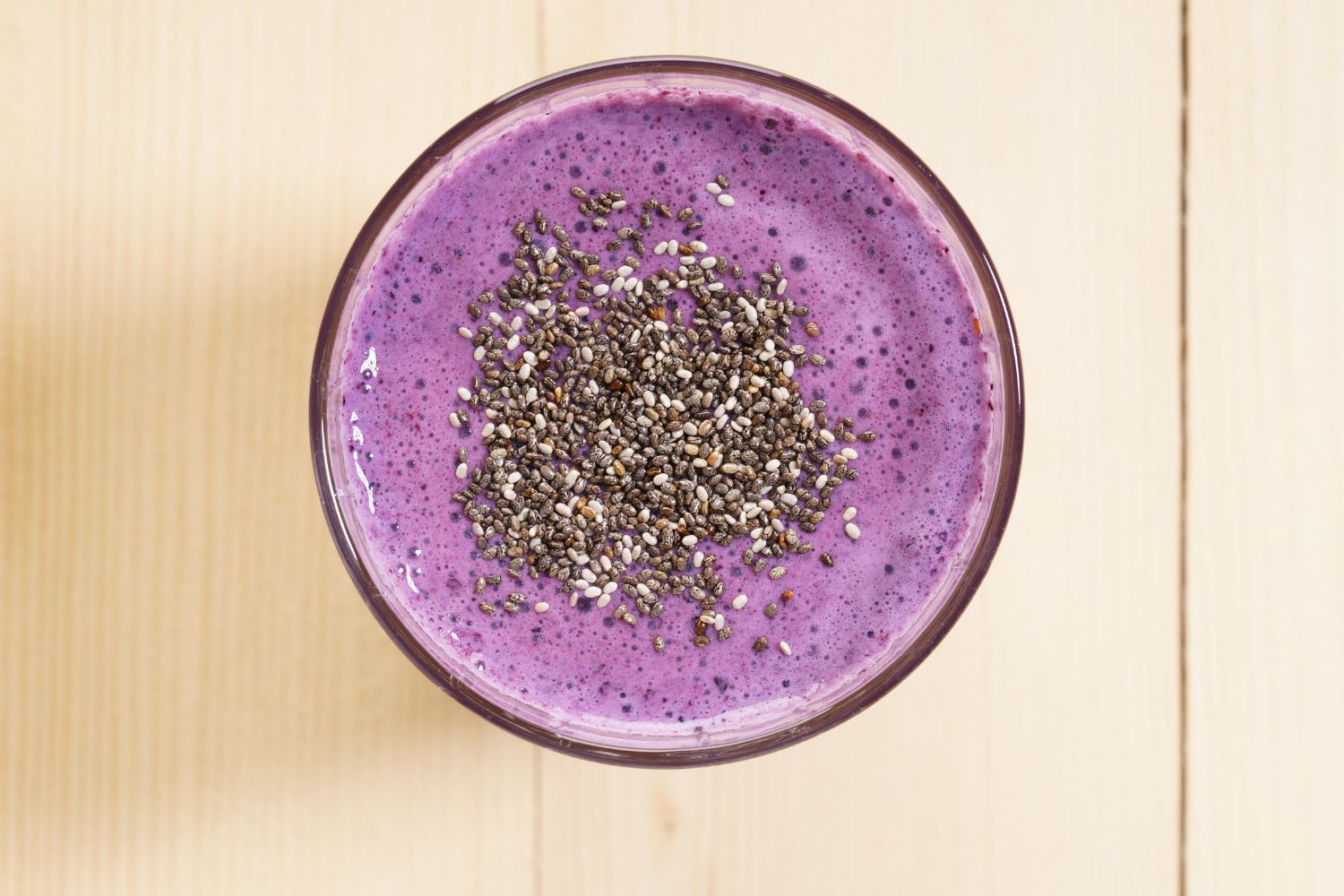
When ice cream makes you scream: how to identify and adapt to midlife food sensitivities
When Kirsty Dixon, a Menopause Educator from York, UK, started experiencing bloating, gas, and acid reflux five years ago, she didn’t immediately connect the symptoms to perimenopause.
“Whenever I ate something sweet like cake, or put sugar in coffee, it felt like an Alka-Seltzer bubbling away in my stomach,” she explains. “I could feel my waistband getting tighter and tighter. It was really uncomfortable. Eventually, I’d have to get to a bathroom to break wind.”
Kirsty is one of millions of women who experience new food sensitivities and digestive symptoms during perimenopause and menopause.
So, does menopause itself cause food intolerances? How can you spot a food sensitivity? And most importantly, how can you adapt your diet to deal with new food sensitivities?
“Whenever I ate something sweet like cake, or put sugar in coffee, it felt like an Alka-Seltzer bubbling away in my stomach. I could feel my waistband getting tighter and tighter. It was really uncomfortable.”
— Kirsty Dixon, Menopause Educator
Do I have an allergy or intolerance – what’s the difference?
Food allergy describes an allergic reaction that occurs when the immune system mounts an emergency response to a protein molecule in food. Immune cells called IgE antibodies detect the protein as an invader and trigger large amounts of histamine and adrenaline. This causes sudden symptoms like swelling in the throat and lips, rapid heartbeat, difficulty breathing, hives, vomiting, or diarrhea. An allergic reaction can be life-threatening and requires immediate medical attention.
Food sensitivity or intolerance describes any reaction that isn’t an allergy. Food intolerance/sensitivity symptoms are wide-ranging and life-limiting but are not life-threatening. Unlike allergies, these types of reactions don’t always involve the immune system. When an intolerance or sensitivity does stimulate the immune system, different kinds of antibodies are produced to those seen in food allergies. Examples of intolerances that don’t involve the immune system include lactose intolerance (a reaction to the natural sugar, lactose, found in milk and dairy products) and histamine intolerance.
Food sensitivities and intolerances can come and go throughout our lives. However, an allergy, once triggered, is usually there for life.

What causes food sensitivities?
Several common triggers cause food sensitivities:
- Bacterial infections and diseases like Crohn’s and Celiac can affect lactose digestion, leading to lactose intolerance.
- Certain ethnicities are at greater risk of lactose intolerance due to a genetic influence on lactase production (lactase digestive enzyme that breaks down lactose). Lactose intolerance is most common in people of African, Asian, Hispanic, and American Indian descent.
- Stress is a significant trigger for food sensitivities and intolerances. Our stress hormones cortisol and adrenaline disrupt normal digestive function and affect the balance of beneficial microbes in the gut that regulate the immune response.
- Oral contraceptives and Hormone Replacement Therapy are associated with gastrointestinal symptoms in some women.
- Antibiotics don’t discriminate between ‘good’ and ‘bad’ bacteria. They may kill off a harmful infection but in doing so they also kill millions of friendly bacteria in the gut. This can affect the lining of the gut, making it more permeable, in a process known as “leaky gut” – or “increased intestinal permeability”, to give it its proper name. When the gut is too permeable, partially digested protein molecules can pass through and trigger the immune system, causing a food intolerance reaction.
- Hormonal changes during the menstrual cycle and menopause can also trigger food intolerance. Estrogen plays a role in maintaining the lining of the gut wall. When estrogen levels drop during menopause, we lose some of this protection and become more prone to “leaky gut”.

Can menopause cause food sensitivity?
The hormone rollercoaster of perimenopause can affect gut motility, gut permeability, and the gut microbiome. As estrogen and progesterone decline, we can experience more bloating, excess gas, and changes in bowel habits.
We also become more sensitive to cortisol at this time, and any kind of stress can make us more sensitive to foods.
Alcohol and caffeine sensitivity during menopause is a common issue. Gone are the days of booze-fueled late nights and a double espresso the next morning — caffeine and alcohol are now major triggers for hot flashes, anxiety, insomnia, nausea, and gut issues. The liver, our main organ of detoxification for alcohol and caffeine, is affected by hormone changes and we simply can’t handle them in the same way anymore.
It’s not all doom and gloom, though. For some women, the hormonal shifts of menopause can enhance their ability to tolerate certain foods. Kirsty has discovered a newfound love of hot chiles which she never had before and says, “If I see something in the store with a five-star chili rating, I have to try it!”
What are food sensitivity symptoms?
Food sensitivities and intolerances can cause a wide range of symptoms including brain fog, fatigue, headache and migraine, bloating, acid reflux, excessive gas, constipation, diarrhea, nausea, vomiting, joint pains, skin rashes, and abdominal pain.
Some of these symptoms can indicate a more serious health condition. Persistent bloating, pain, and a sense of fullness, for example, can be early signs of ovarian cancer. It is always advisable to discuss symptoms with your healthcare provider to rule out any serious underlying causes.

How to identify food sensitivities
Food sensitivities can be much harder to identify than allergies or an intolerance that involves an immune response. Sometimes you can eat food and be okay, while other times you come out bloated and itchy.
Lactose intolerance is one of the easiest to identify as the symptoms —primarily bloating, nausea, cramps, and diarrhea — occur 30 minutes to 2 hours after eating dairy products. Many other food intolerances aren’t as clear cut.
Keeping a food diary for at least a month (a full menstrual cycle if you are menstruating) is a good place to begin. Write down what you’ve eaten, how it was prepared, how you were feeling at the time, and whereabouts in your cycle you were, if you have periods. This helps to identify any links with hormone changes or stress.
Once you have identified a trigger food or foods, remove them from your diet one at a time for 6-12 weeks before slowly reintroducing.
There are different types of food intolerance tests available to speed up the identification process, but be sure to work with a registered nutrition practitioner or doctor who specializes in food intolerances to ensure accurate interpretation of the results.

5 of the most commonly intolerant foods
As a practicing nutritional therapist, I’ve run hundreds of IgG antibody food intolerance tests for clients. The most commonly reactive foods I’ve seen are, in no particular order:
Wheat: modern varieties of wheat contain slightly different proteins compared to ancient varieties like spelt, and our digestive systems haven’t had enough time to evolve and adapt to them.
Gluten: gluten is a type of protein found in wheat, barley, and rye. Celiac Disease involves an allergy to one of the fractions of gluten. Millions of people have Non-Celiac Gluten Sensitivity, often diagnosed when a Celiac test is negative, but you know you react to gluten.
Cow’s milk: whey and casein are the two main proteins in cow’s milk that people respond to.
Egg white: egg proteins are concentrated in the egg white, which is why this is a more common intolerance than egg yolk.
Tree nuts: tree nuts include varieties like cashews, Brazil nuts, almonds, walnuts, and pistachios.
Replace sensitive foods with a wide range of alternatives. It’s easy to focus on what you can’t eat and this can feel restrictive. Instead, focus on what you can eat and embrace as much diversity as possible.
How to manage food sensitivities
Once you’ve identified your food culprits, it’s time to start nurturing your gut so you have the best chance of being able to reintroduce them again.
- Avoid your sensitive foods as much as possible. Read food labels carefully and stick with eating alternative foods. This gives your body a chance to down-regulate the immune response (if your immune system was involved in the reaction) and do some gut repair work.
- Manage stress! Not always easy, but important. Find what gives you joy and fit more of it into your life. Anxiety and stress have a huge impact on gut health and immunity so anything you can do to support your mental well-being and resilience to stress is a bonus.
- Use probiotic and prebiotic foods to nourish your gut microbiome. Fermented foods like yogurt, sauerkraut, kefir, and kimchi are probiotics, bringing beneficial bugs into the digestive system. Fiber-rich foods like oats, bananas, asparagus, and lentils act as pre-biotics, feeding the gut bugs.
- Replace sensitive foods with a wide range of alternatives. It’s easy to focus on what you can’t eat and this can feel restrictive. Instead, focus on what you can eat and embrace as much diversity as possible. Your local healthstore will be able to help with things like wheat, gluten, egg, and dairy alternatives.
- Get used to telling friends and family what you can eat and what you are choosing to avoid. Some people will be more understanding than others, and it helps if you can suggest alternatives for them if they want to prepare a meal.
Food sensitivities can be upsetting and hard to identify, especially when dealing with a host of other menopausal symptoms. These reactions can be temporary though, and with the right support and focus on whole-body health, you can navigate your way through.



